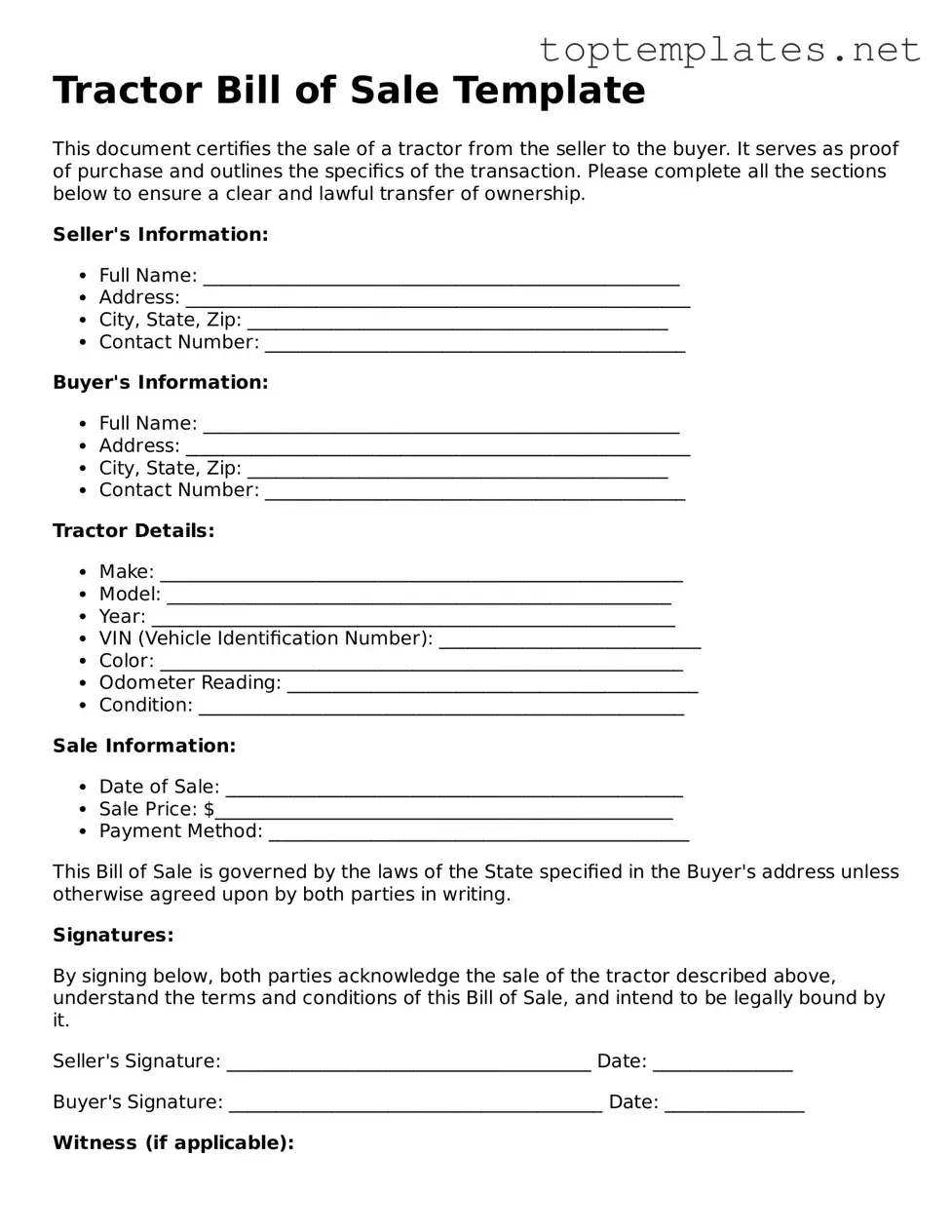What is a Tractor Bill of Sale form?
A Tractor Bill of Sale form is a legal document that records the sale of a tractor from one party, the seller, to another, the buyer. It serves as proof of purchase and details important information such as the sale date, purchase price, and specifics about the tractor, including the make, model, year, and identification number. This form is crucial for both the buyer's and seller's protection, as it verifies the transfer of ownership and can be used for registration and tax purposes.
Why do I need a Tractor Bill of Sale?
Having a Tractor Bill of Sale is essential for a few reasons. Firstly, it legally documents the transaction and transfer of ownership from the seller to the buyer. This is important for liability reasons, ensuring the seller is no longer responsible for the tractor once it's sold. It also assists the buyer in registering the vehicle, if required, and may be needed for tax purposes. Additionally, it provides a record of the conditions agreed upon at the time of sale, which can protect both parties in case of future disputes.
What information should be included in a Tractor Bill of Sale?
A comprehensive Tractor Bill of Sale should include the date of the sale, names and addresses of both the buyer and the seller, a detailed description of the tractor (make, model, year, VIN), the purchase price, and payment details (including if the sale is conditional upon certain terms being met). It should also mention any warranties or as-is condition statements to clear any future liabilities. Both parties need to sign the document to make it legally binding.
Is a Tractor Bill of Sale legally required to sell or buy a tractor?
The legal requirement of a Tractor Bill of Sale can vary by state or country. In many places, it is highly recommended or required for the purposes of registration, tax assessment, and to clearly establish the new ownership of the tractor. Even if not legally required, it's beneficial to have a Tractor Bill of Sale to provide peace of mind and legal protection for both the buyer and seller.
How do I ensure that my Tractor Bill of Sale is legally binding?
To ensure that a Tractor Bill of Sale is legally binding, make sure it contains all the necessary information about the sale, the tractor, and both parties involved. Both the buyer and the seller should provide accurate information and sign the document. It's a good practice to have the signatures notarized, although not always required. To further ensure its validity, you might consider consulting with or having a legal professional review the document before finalization.
